
Darwin Cordillera: Terra incognita of the southern Andes

Association Karukinka
Loi 1901 - d'intérêt général
Derniers articles
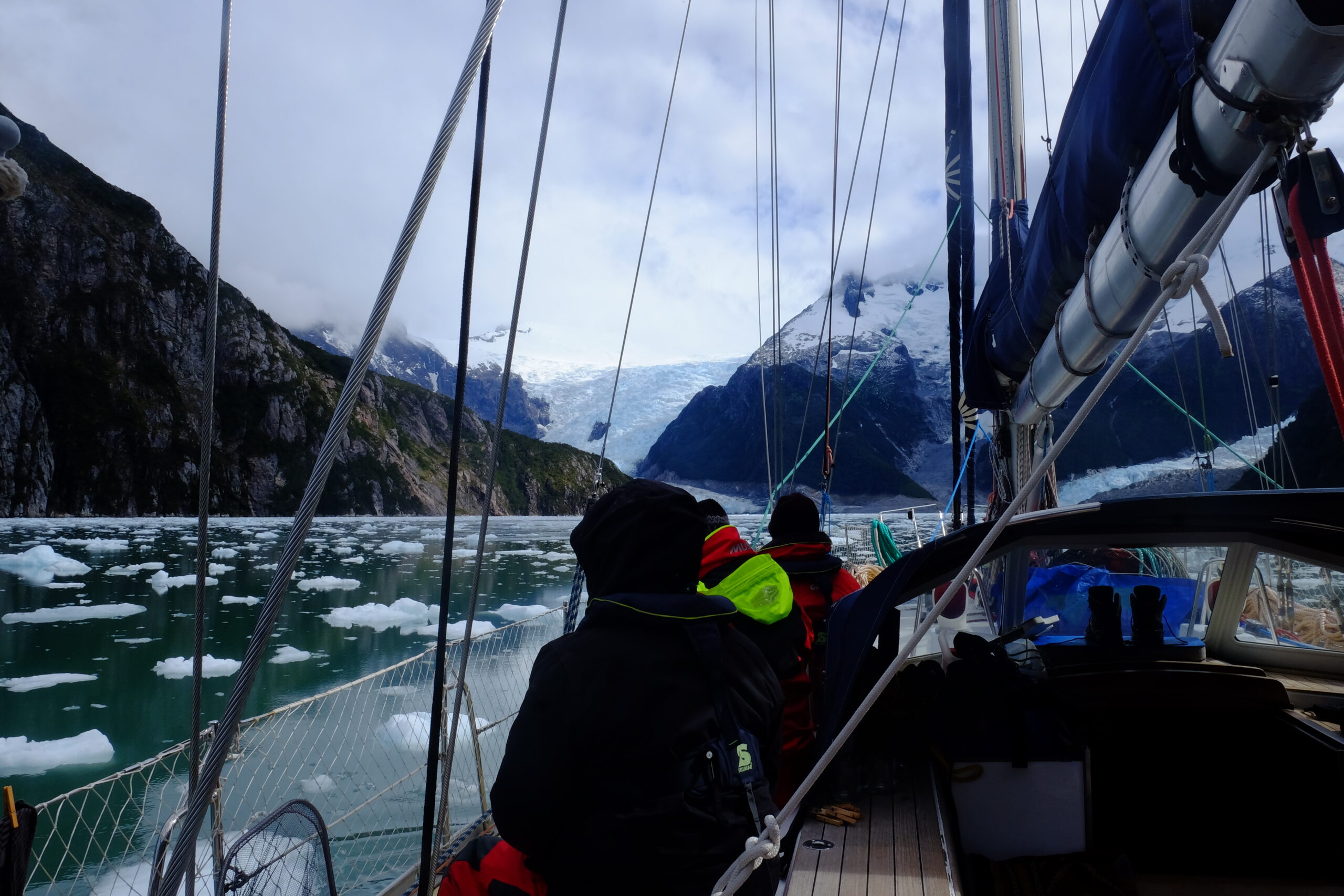
Suivez nous
The Darwin Cordillera represents one of the last wild frontiers of our planet, a mountain range of striking beauty yet formidable hostility, located at the far southwestern tip of Chilean Tierra del Fuego. This mountain chain, known to Europeans in 1832 by Charles Darwin during his historic voyage aboard the HMS Beagle, constitutes the southernmost extension of the Andes Cordillera and remains to this day one of the most extreme and least explored environments on the planet.
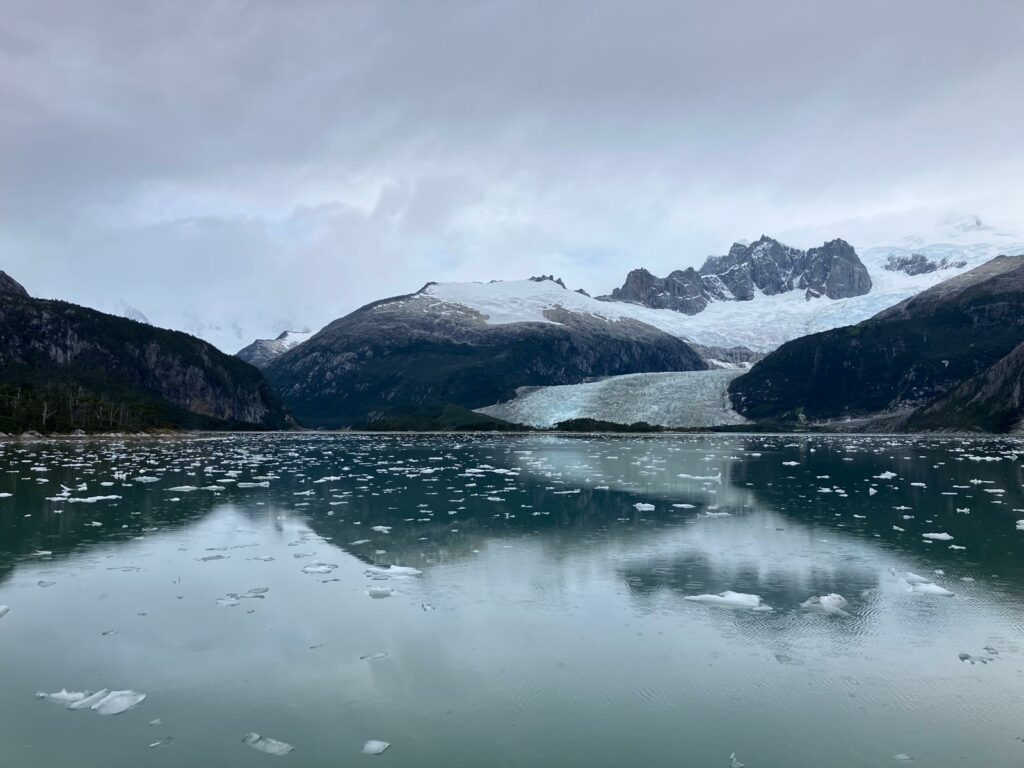
Nestled between 54°15′ and 54°50′ south latitude and 69°15′ and 71°30′ west longitude, this “unknown land” extends 170 kilometers from west to east and 60 kilometers from north to south, harboring an ice field of over 2,300 km² – equivalent to the total area of Alpine glaciers. Until 2011, the year of the first complete crossing achieved by the French Military High Mountain Group (GMHM), the Darwin Cordillera remained one of the last “white rectangles” on world maps, testifying to the extreme difficulty its exploration represents.
Geography and geology: an exceptional natural laboratory
Geographic location and configuration of the Darwin range
The Darwin Cordillera occupies a unique geographic position in the world, forming a mountainous peninsula west of the great island of Tierra del Fuego. This mountain chain is surrounded by water on three sides: to the north by the Almirantazgo Canal connected to the Strait of Magellan, to the south by the Beagle Canal, and to the west by the Cockburn Canal opening onto the Pacific Ocean. Only its eastern portion remains connected to the mainland, near the Argentine-Chilean border, making any land access practically impossible.
The massif extends from Mount Sarmiento in the west (2,404 m) to the Yendegaia valley in the east, passing through its highest peak, Mount Shipton (2,469 m), often confused with Mount Darwin (2,429 m). This historical confusion stems from Eric Shipton’s 1961 expedition, who believed he had climbed Mount Darwin but had actually reached a higher summit, subsequently named in his honor.
A complex geological structure
The geology of the Darwin Cordillera reveals a complex and fascinating tectonic history. The massif is principally composed of a metamorphic complex comprising high-grade metamorphic rocks, notably crystalline schists containing kyanite and sillimanite. These minerals testify to extreme pressure and temperature conditions during the mountain chain’s formation.

The high-grade metamorphism observed in the Darwin Cordillera is directly related to the closure of the Rocas Verdes basin during the Cretaceous, a major geological event that shaped the region’s current structure. This metamorphic complex constitutes the only ensemble of its kind in the southern Andes presenting amphibolite rocks with kyanite and sillimanite, making the Darwin Cordillera a unique geological laboratory for understanding the tectonic evolution of South America’s southern tip.
The progressive separation of South America and Antarctica during the Cenozoic transformed local tectonics into a transpressive regime characterized by transform faults. The opening of the Drake Passage 45 million years ago also contributed to shaping the region’s current geomorphology.
The ice field and its characteristics
The Darwin Cordillera ice field covers an impressive area of 2,300 km², rivaling the planet’s largest non-polar glacier systems. This ice mantle feeds a multitude of glaciers flowing toward the sea, creating a landscape of deep fjords and spectacular glacial walls.
Among the most remarkable glaciers, the Marinelli Glacier occupies a particular position as the most active and most studied glacier of the cordillera. Located in Alberto de Agostini National Park, this glacier extends several kilometers from the Darwin Cordillera to Ainsworth Bay in Almirantazgo Fjord. The Marinelli Glacier is recognized for its significant retreat rate, documented over several decades, making it a significant witness to climate change in the region.
Extreme climate: the Roaring Fifties
Dantesque meteorological conditions
The climate of the Darwin Cordillera ranks among the most extreme on the planet, shaped by its position in the dreaded Roaring Fifties. This region experiences direct influence from successive cyclonic depressions, fed by the temperature difference between the relatively warm waters of the Southern Ocean and Antarctic ice masses.
Wind constitutes the most characteristic and most formidable climatic element of the Darwin Cordillera. The average annual wind speed reaches 70 km/h, but gusts can exceed 250 km/h during phenomena called willywaws or ayayema according to indigenous Kawésqar and Yaghan peoples’ terminology. These winds of extraordinary violence were meticulously described by Admiral FitzRoy during his exploration with Darwin, who considered them a “wicked divinity” capable of unleashing without warning.
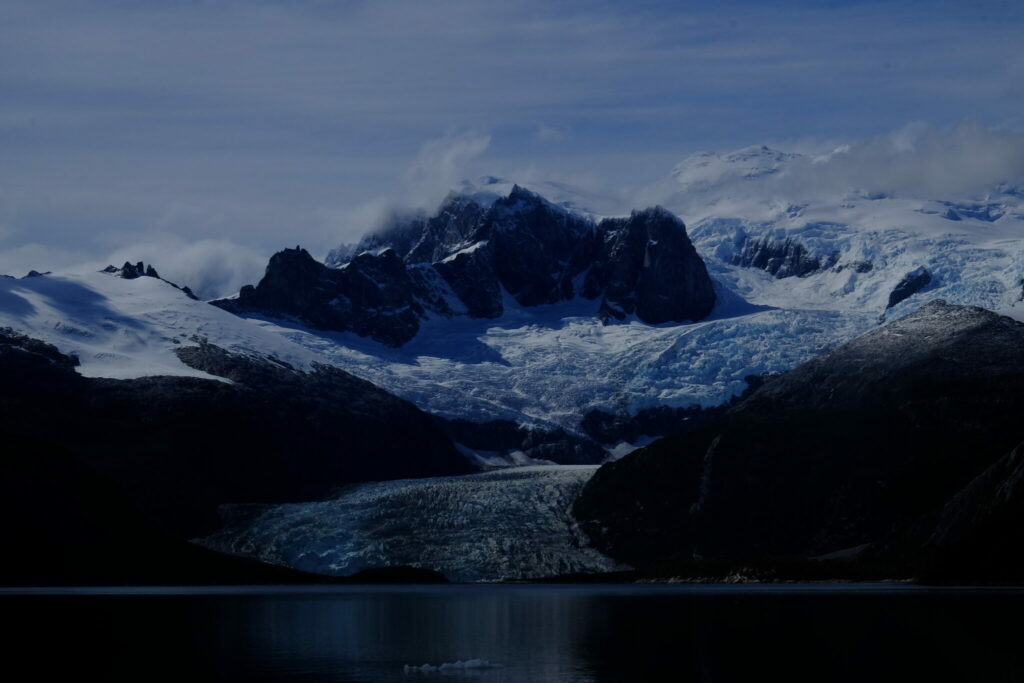
Precipitation and seasonal variability
Precipitation in the Darwin Cordillera is abundant and nearly constant, feeding the vast glacier system. The region receives an average of over 3,000 mm of annual precipitation, principally as snow at altitude and rain in coastal zones. This constant humidity, combined with violent winds, creates frequently reduced visibility conditions that considerably complicate any attempt at exploration.
Average temperature varies between 0 and 5°C during the cold season (southern winter) and between 5 and 10°C during the warm season (southern summer). These relatively slight thermal variations reflect the moderating influence of the ocean, but mask the constant cooling effect of wind that considerably lowers the perceived temperature.
Biodiversity: a unique subantarctic ecosystem
Terrestrial and marine Fauna
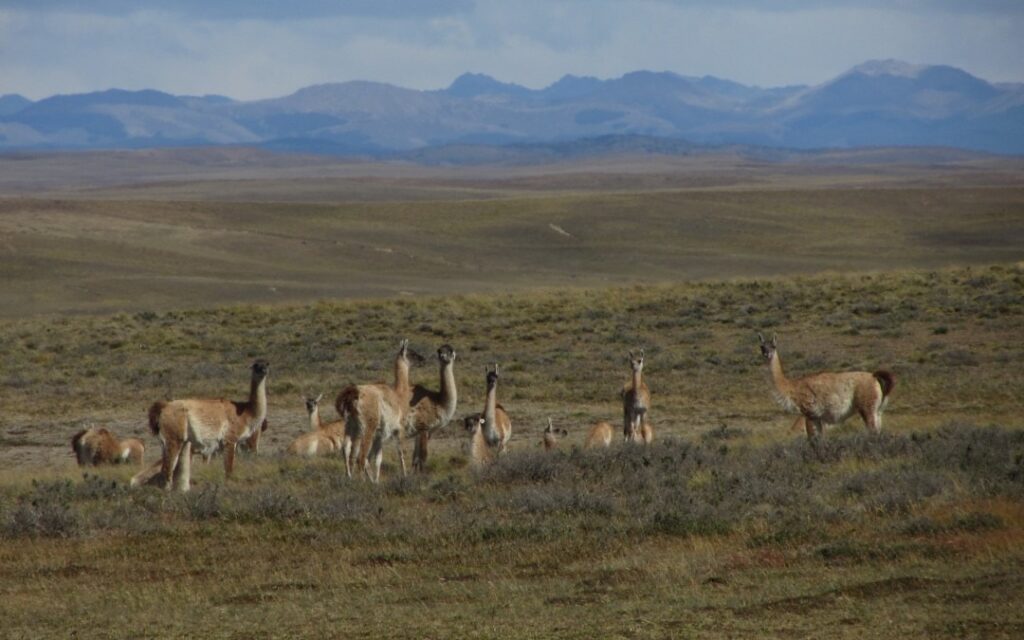
The Darwin Cordillera harbors remarkable biodiversity, adapted to the extreme conditions of this subantarctic region. Among terrestrial mammals, the guanaco (Lama guanicoe) constitutes the emblematic species of steppes and mountainous zones, evolving in herds in the least hostile sectors. These wild camelids, perfectly adapted to violent winds and cold temperatures, represent an important food source for the region’s predators.
The region also harbors several canid species adapted to southern conditions, notably the Magellanic fox (Lycalopex culpaeus) and the gray fox (Lycalopex griseus), which occupy various habitats ranging from forests to rocky zones.
Particular mention must be made of Canadian beavers (Castor canadensis), introduced in the 1940s and subsequently become a major invasive exotic species. These semi-aquatic rodents, whose population today reaches several tens of thousands of individuals, profoundly modify the local ecosystem by constructing dams that disrupt the natural hydrology of watercourses.
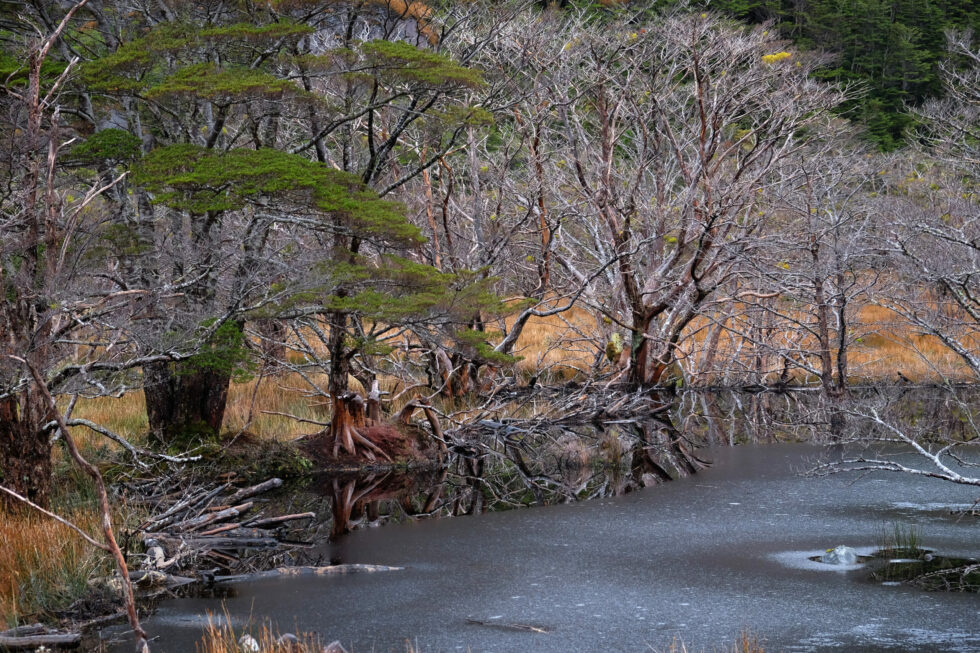
Avifauna: masters of the southern sky
The avian diversity of the Darwin Cordillera testifies to this region’s ecological richness. Over 90 bird species have been recorded, distributed between terrestrial and marine species. The Andean condor (Vultur gryphus), with its impressive wingspan reaching up to 3 meters, dominates the cordillera’s skies and constitutes one of the most striking spectacles for rare observers.
Raptors are well represented with caracaras and chimangos. In wooded zones, the Magellanic woodpecker, comesebos, and rayaditos enliven the Magellanic forest with their characteristic songs.
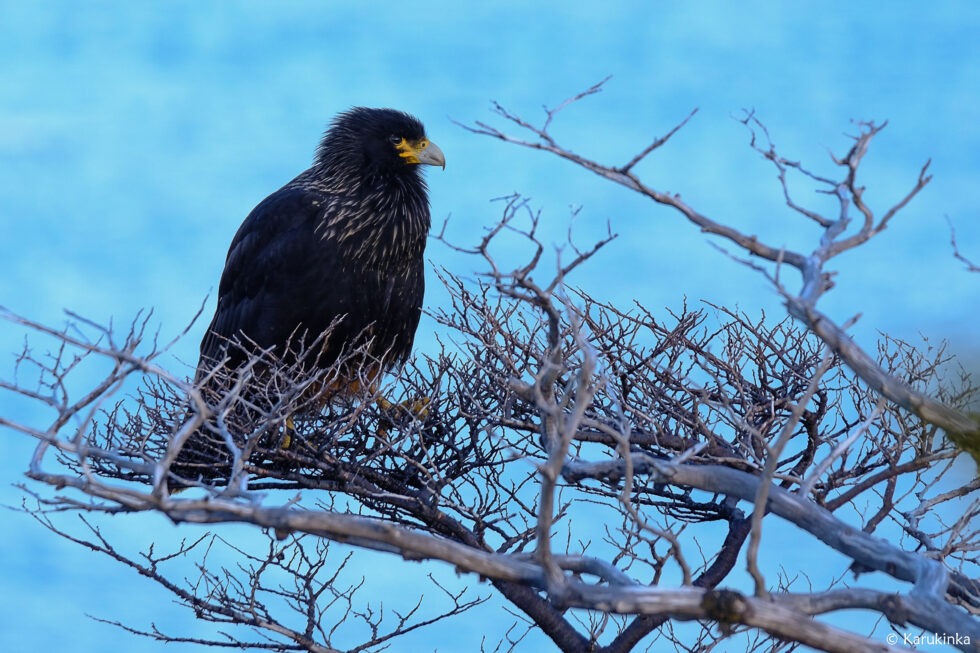
Aquatic and coastal environments harbor exceptional marine fauna. The waters of the Beagle Canal and surrounding fjords serve as habitat for colonies of Magellanic penguins (Spheniscus magellanicus), an emblematic species of the region. More remarkably, the Darwin Cordillera harbors the only colony of king penguins (Aptenodytes patagonicus) located outside Antarctica and subantarctic islands, testifying to this ecosystem’s exceptional character.
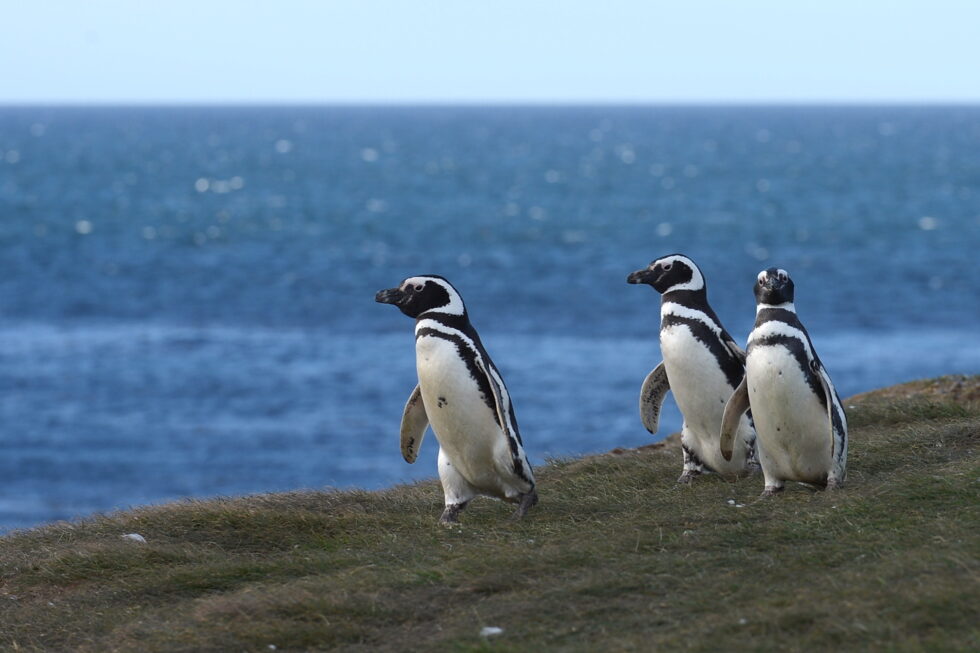
Marine mammals of Patagonian fjords
The waters surrounding the Darwin Cordillera constitute a sanctuary for numerous marine mammal species. Southern right whales (Eubalaena australis) and humpback whales (Megaptera novaeangliae) regularly frequent these nutrient-rich waters. Leopard seals find refuge in protected fjords, profiting from the region’s fish wealth.
Elephant seals (Mirounga leonina) form temporary colonies on certain isolated beaches, particularly in the Marinelli Glacier zone where an endangered population still subsists. South American sea lions (Otaria flavescens) are also present in large numbers, creating noisy colonies on rocky islets of the fjords.
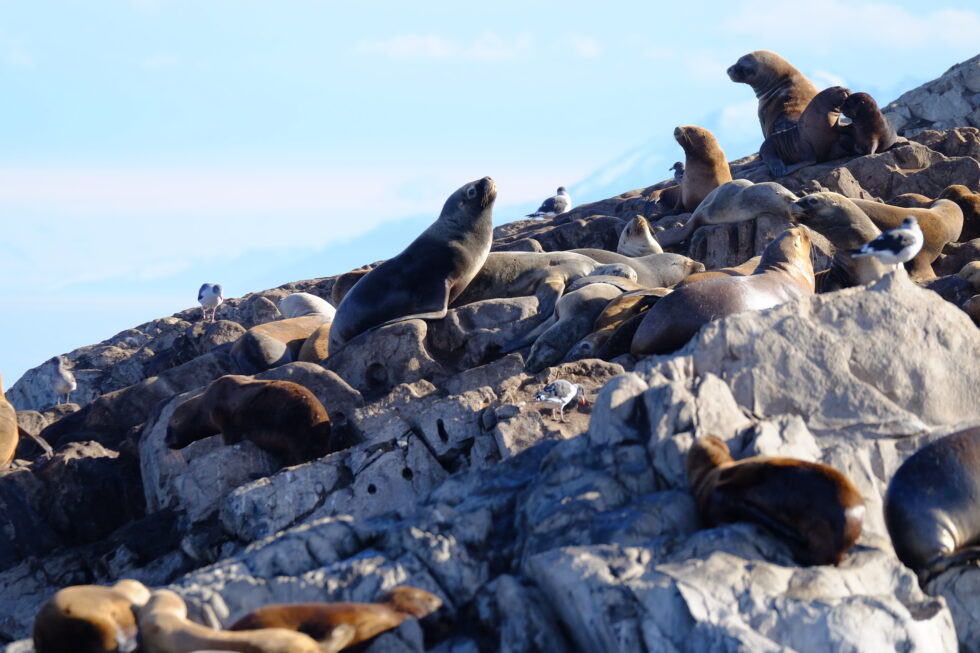
Flora: Magellanic forests and their adaptation
The subantarctic forest ecosystem
The vegetation of the Darwin Cordillera is characterized by the presence of subantarctic Magellanic forests, also called Fuegian forests. These ecosystems unique to the world are dominated by species of the genus Nothofagus, perfectly adapted to the region’s extreme climatic conditions.
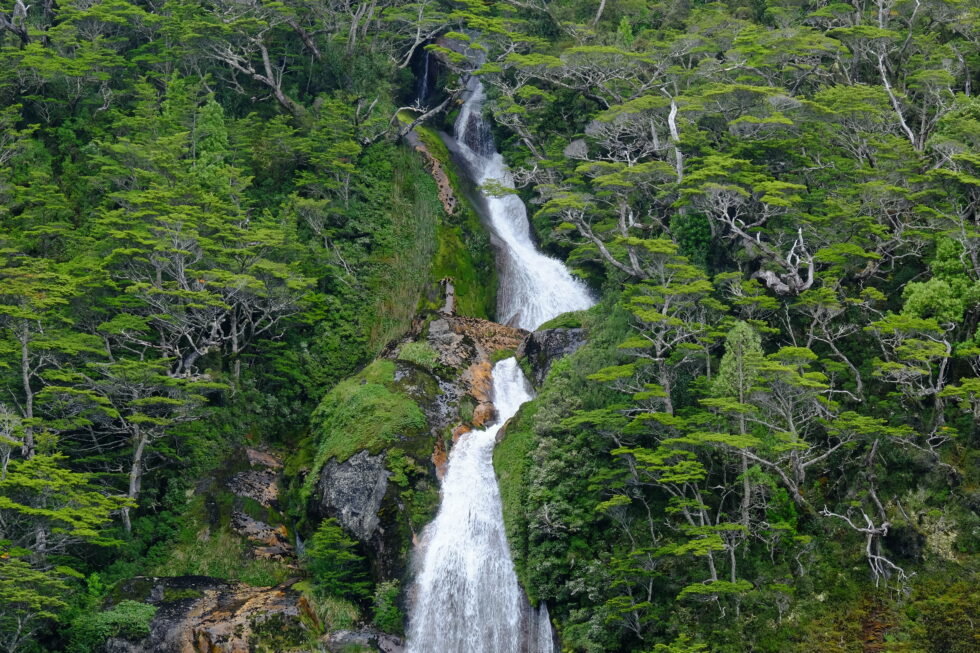
The lenga (Nothofagus pumilio) constitutes the most characteristic and most widespread forest species of the Darwin Cordillera. This deciduous tree, capable of resisting violent winds and freezing temperatures, forms dense stands up to 700 meters altitude. Its remarkable adaptation capacity allows it to survive in conditions where few other arboreal species can thrive.
The coihue (Nothofagus betuloides) and ñire (Nothofagus antarctica) complete the southern beech cortege that dominates the forest landscape. These species, associated with canelo (Drimys winteri), form a dense and complex forest ecosystem, shaped by violent winds that literally sculpture tree silhouettes.
Adaptation to the extreme: dwarf lengas and tundra
Beyond 700 meters altitude, conditions become too rigorous to maintain normally sized forests. In this transition zone, a remarkable adaptation phenomenon is observed: the formation of dwarf lengas, trees of the same species but whose growth is considerably slowed and size reduced by extreme conditions.
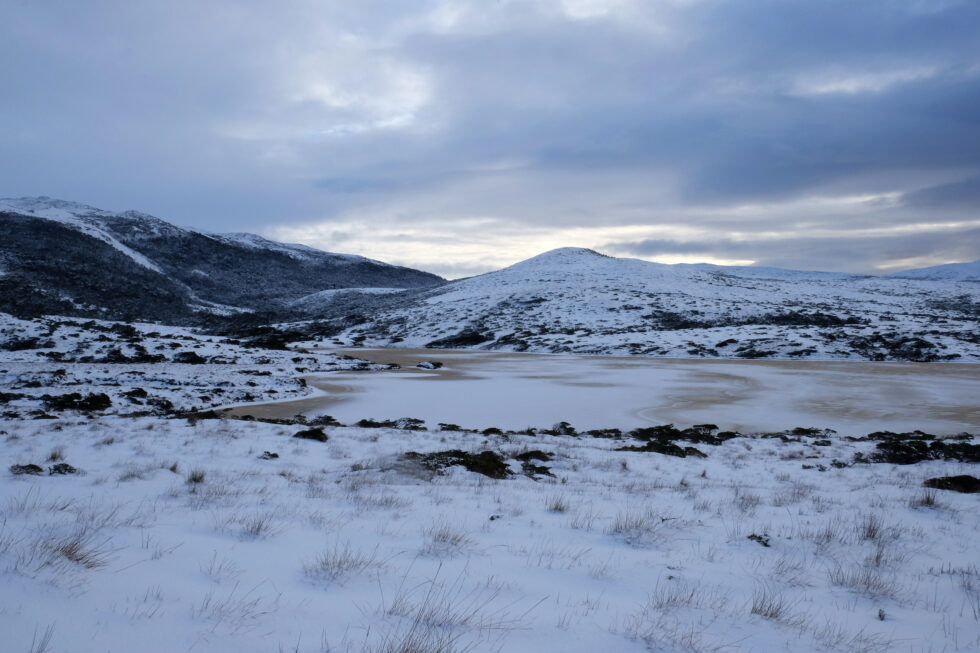
This transition zone marks the boundary between the forest tier and the alpine tier, where vegetation consists principally of mosses and lichens capable of resisting desiccating winds and negative temperatures. This Magellanic tundra constitutes a unique ecosystem, harboring highly specialized plant species.
Specialized flora and endemism
The understory of Magellanic forests harbors remarkable floristic diversity, adapted to conditions of constant humidity and low light. Among remarkable species, drosera uniflora, a small carnivorous plant, perfectly illustrates extraordinary adaptations developed by local flora to survive in this nutrient-poor environment.

Shrubs bearing berries occupy an important place in the ecosystem, notably calafate, Darwin’s barberry, and Magellan currant. These species constitute a precious food source for local fauna and testify to the complex interconnection of trophic networks in this extreme environment.
Herbaceous flora includes remarkable endemic species such as Magellan primrose, Magellan avens, various orchid species, and yellow violet. The flowering period, concentrated on southern spring (September to December), briefly transforms landscapes into a kaleidoscope of colors contrasting with the environment’s usual harshness.
Historical discovery by Charles Darwin
The modern history of the Darwin Cordillera begins on February 12, 1834, when Captain Robert FitzRoy names this mountain chain in honor of Charles Darwin’s 25th birthday. This naming occurs during the HMS Beagle’s second voyage, a British hydrographic expedition that revolutionizes geographical and scientific understanding of Tierra del Fuego.
Darwin himself, then 25 years old, discovers these mountains with a mixture of fascination and apprehension. In his writings, he describes a landscape of striking beauty but formidable hostility, already sensing the considerable challenges that exploring this region would represent. FitzRoy had initially named a canal southwest of the mountain “Darwin Canal” to honor the young naturalist’s courage in rescuing the ship’s boats threatened by falling ice.
The era of first attempts
For more than a century after its discovery, the Darwin Cordillera remains largely unexplored, defying the most audacious exploration attempts. Rare incursions limit themselves to the eastern and western extremities of the chain, leaving the massif’s core in near total mystery.
Father Alberto de Agostini, an Italian missionary and explorer, counts among the first to seriously penetrate the region in the early twentieth century. His expeditions, conducted between 1910 and 1960, permit identification and mapping of several summits and glaciers, notably Mount Italia and Mount Francés. His photographs and accounts constitute the first visual testimonies of the Darwin Cordillera’s interior, revealing to the world the magnificence of these glacial landscapes.
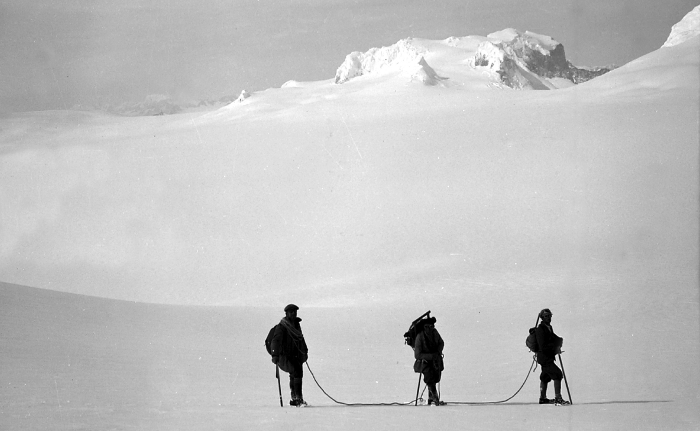
The exploit of alpinist Eric Shipton (1961)
The year 1961 marks a turning point in the Darwin Cordillera’s exploration history with the expedition led by Eric Shipton, one of the twentieth century’s greatest British explorers. Accompanied by three Chilean alpinists – Eduardo Garcia, Francisco Vivanco, and Cedomir Marangunic – Shipton achieves what he believes to be the first ascent of Mount Darwin.
This expedition reveals a geographic confusion that persists until 1970. Shipton’s team actually climbs a summit located northwest of the true Mount Darwin, culminating 40 meters higher than the latter. This error will be clarified by a New Zealand expedition in 1970, proposing to name the summit climbed by Shipton Mount Shipton, a proposal accepted by Chilean geographic authorities.
Shipton’s expedition nonetheless marks a crucial stage in Darwin Cordillera knowledge, demonstrating the feasibility of high-altitude alpinism in this extreme region. Shipton’s detailed descriptions reveal extraordinary difficulties posed by climate, with winds of such violence that alpinists must crawl on all fours to progress.
The first complete crossing by GMHM alpinists (2011)
October 6, 2011 marks the completion of one of the last great terrestrial exploration exploits of the twenty-first century. Six members of the Military High Mountain Group (GMHM) from Chamonix successfully complete the first integral crossing of the Darwin Cordillera, a sporting and human feat long considered impossible.
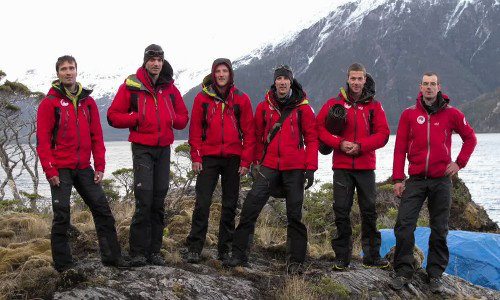
The expedition team named “on Darwin’s edge,” directed by Captain Lionel Albrieux and composed of Lieutenant Didier Jourdain, Master Sergeant Sébastien Bohin, Staff Sergeant François Savary, Corporal Sébastien Ratel, and civilian climber Dimitri Munoz, traverses 150 kilometers in a straight line (250 actual kilometers) in complete autonomy during 29 days.
This historic expedition requires meticulous preparation lasting an entire year. Each member carries 75 kilograms of equipment, including 40 kilograms of freeze-dried food, all hauled on pulkas (sledges) specially tested in Norway. The absence of reliable cartography – the latest dating from 1954 – obliges the team to rely on an unconventional GPS system associated with aerial photographs.
The conditions encountered exceed everything the French alpinists could have imagined. Facing Mount Darwin, the team must negotiate a 5-kilometer sharp ridge, oscillating between 40 centimeters and 1.5 meters wide. Winds regularly reach 150 km/h, forcing explorers to progress on all fours or even lying down to avoid being swept away.

The success of this expedition definitively transforms the Darwin Cordillera from a “terra incognita” into accessible territory, opening the way to future scientific and sporting explorations. The documentary film “On Darwin’s Edge,” created from images filmed by the team, testifies to this exceptional exploit and reveals to the general public the wild beauty of this region.
Conservation and protection status
Alberto de Agostini National Park
Protection of the Darwin Cordillera is principally articulated around Alberto de Agostini National Park, created on January 22, 1965 by Supreme Decree No. 80 of Chile’s Ministry of Agriculture. With an area of 1,460,000 hectares, this park constitutes Chile’s third largest protected area and encompasses the majority of the Darwin Cordillera.
The national park bears the name of Father Alberto María De Agostini (1883-1960), a Salesian missionary, explorer, photographer, geographer, and Italian ethnologist who devoted much of his life to exploring and documenting Patagonia and Tierra del Fuego. His pioneering works, including an important photographic collection and approximately twenty books on the region, constitute inestimable scientific and cultural heritage.
The park extends across three Chilean provinces: Magallanes, Tierra del Fuego, and Chilean Antarctica, illustrating the administrative complexity of this border region. It includes numerous islands (Gordon, Londonderry, part of Hoste Island), the entirety of the Darwin Cordillera with its glaciers, as well as numerous fjords.
International recognition and UNESCO Biosphere Reserve
In 2005, Alberto de Agostini National Park obtains major international recognition by integrating UNESCO’s Cabo de Hornos (Cape Horn) Biosphere Reserve. This designation underscores the region’s global ecological and cultural importance and places the Darwin Cordillera among the planet’s 24 most pristine ecoregions.
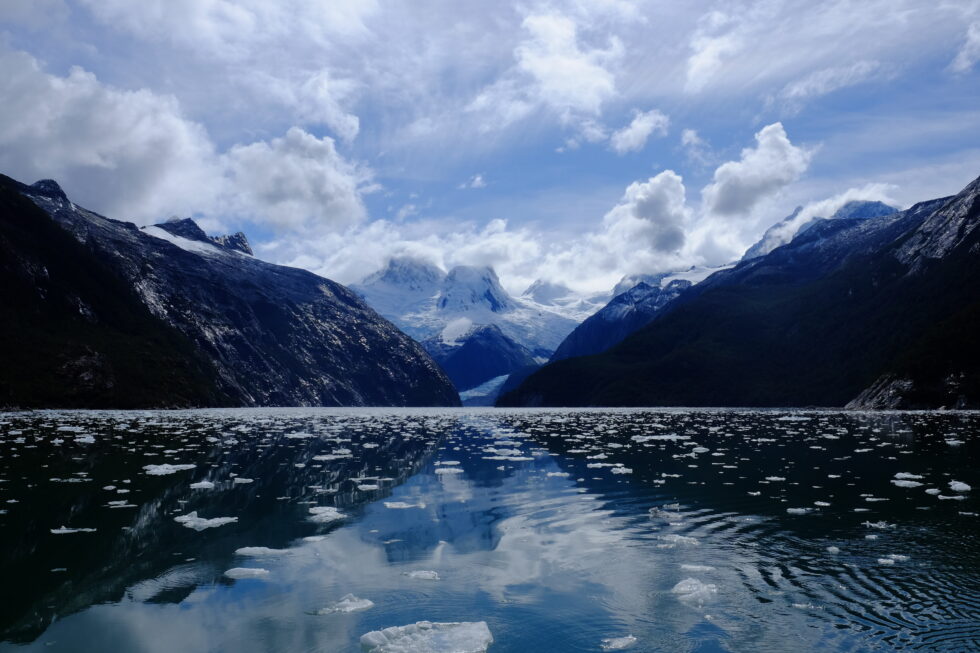
Biosphere reserve status implies long-term conservation commitment, associated with scientific research programs and sustainable development. This recognition also fosters responsible ecotourism development, permitting visitors to discover this exceptional region while contributing to its preservation.
The Darwin Cordillera also benefits from protection offered by various international conventions, notably those concerning wetland and migratory species protection. Its unique geographic position makes it an essential corridor for numerous marine bird and marine mammal species transiting between the Atlantic and Pacific.
Current conservation challenges
Despite its protection status, the Darwin Cordillera faces several significant conservation challenges. Climate change constitutes the most concerning threat, with documented retreat of most glaciers in the region. The Marinelli Glacier, in particular, experiences accelerated retreat testifying to global warming’s impact on these fragile ecosystems.
The introduction of exotic species, notably Canadian beavers, poses a major ecological challenge. These ecosystem engineers profoundly modify local hydrology by constructing dams, disrupting natural habitats and compromising Magellanic forest integrity.
Tourist pressure, though limited by the region’s difficult accessibility (only by maritime access), requires careful management to prevent degradation of the most sensitive sites. The development of specialized cruises toward the Darwin Cordillera’s glaciers requires a delicate balance between public accessibility, hazard awareness (avoiding fire due to wind and Yagan archaeological sites present on the coast) and environmental preservation.
Scientific research and contemporary issues
Climate change laboratory
This cordillera constitutes an exceptional natural laboratory for studying climate change and its impacts on subantarctic ecosystems. The region’s glaciers, particularly the Marinelli Glacier, have been subject to continuous scientific monitoring for several decades.
Research conducted reveals a concerning trend of generalized glacier retreat. The Marinelli Glacier, which was one of the region’s most stable glaciers until the 1960s, now presents retreat rates among the world’s highest. This rapid evolution makes it a privileged indicator of climatic modifications at regional and global scales.
Geomorphological and climatological studies conducted in the Darwin Cordillera also contribute to understanding ocean, atmosphere, and cryosphere interaction mechanisms in southern high latitudes. This research holds particular importance for global climate prediction models.
Biodiversity and evolutionary adaptation
The Darwin Cordillera’s unique geographic position, at the interface between temperate and subantarctic domains, makes it privileged terrain for understanding adaptation and species evolution mechanisms under extreme environmental conditions.
Research on marine fauna reveals the region’s importance as a biological corridor between Atlantic and Pacific oceans. Marine mammal populations frequenting the Darwin Cordillera’s fjords present particular genetic characteristics, testifying to these ecosystems’ relative isolation.
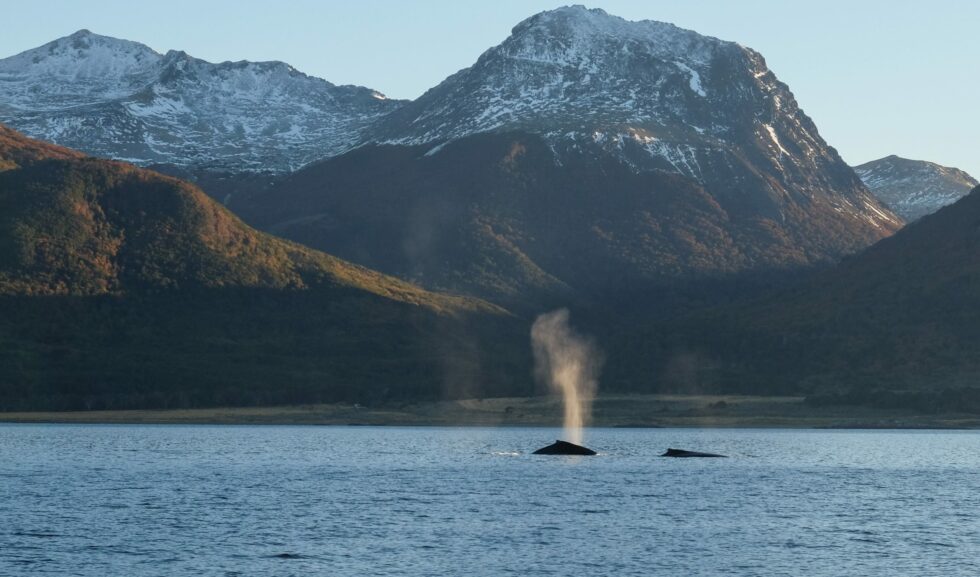
Study of Magellanic flora contributes to understanding vegetation adaptation mechanisms to extreme wind conditions and water stress. The dwarf forms developed by certain arboreal species constitute a study model for understanding organism phenotypic plasticity facing environmental constraints.
Ecosystem vulnerability and resilience
The cordillera’s ecosystems present particular vulnerability to external disturbances, due to their geographic isolation and already extreme environmental conditions. This intrinsic fragility renders adaptive conservation strategy development all the more crucial.
Research on Magellanic forest resilience facing climate changes reveals variable adaptation capacities depending on species and sites. Some lenga populations show signs of increasing stress, while others appear to maintain vitality despite environmental modifications.
The impact of introduced species on local ecological balance undergoes thorough study, notably concerning Canadian beavers whose proliferation radically modifies aquatic and forest habitat structure. This research contributes to developing invasive species management strategies adapted to the Darwin Cordillera’s specific conditions.
A world heritage to preserve
The Darwin Cordillera remains today one of the planet’s last wild sanctuaries, a territory where nature still reigns as absolute master despite mounting pressure from human activities. This exceptional mountain chain, shaped by millions of years of geological and climatic evolution, constitutes natural heritage of inestimable value for all humanity.
The feat achieved by GMHM in 2011 has certainly lifted the veil on this “terra incognita,” but it has also revealed the fragility of these unique ecosystems facing twenty-first century challenges. Accelerated glacier retreat, introduced species impact, and global climate change pressures threaten this natural jewel’s integrity.
Preserving the Darwin Cordillera requires a global approach combining strict protection, cutting-edge scientific research, and responsible ecotourism development. This extraordinary region reminds us that certain territories of our planet merit preservation in their wild state, not only for their intrinsic beauty, but also for their irreplaceable role in understanding fundamental mechanisms governing our biosphere.
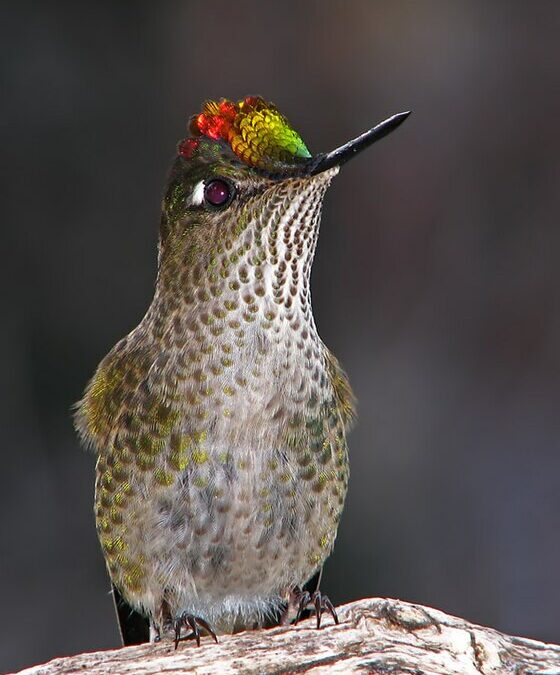

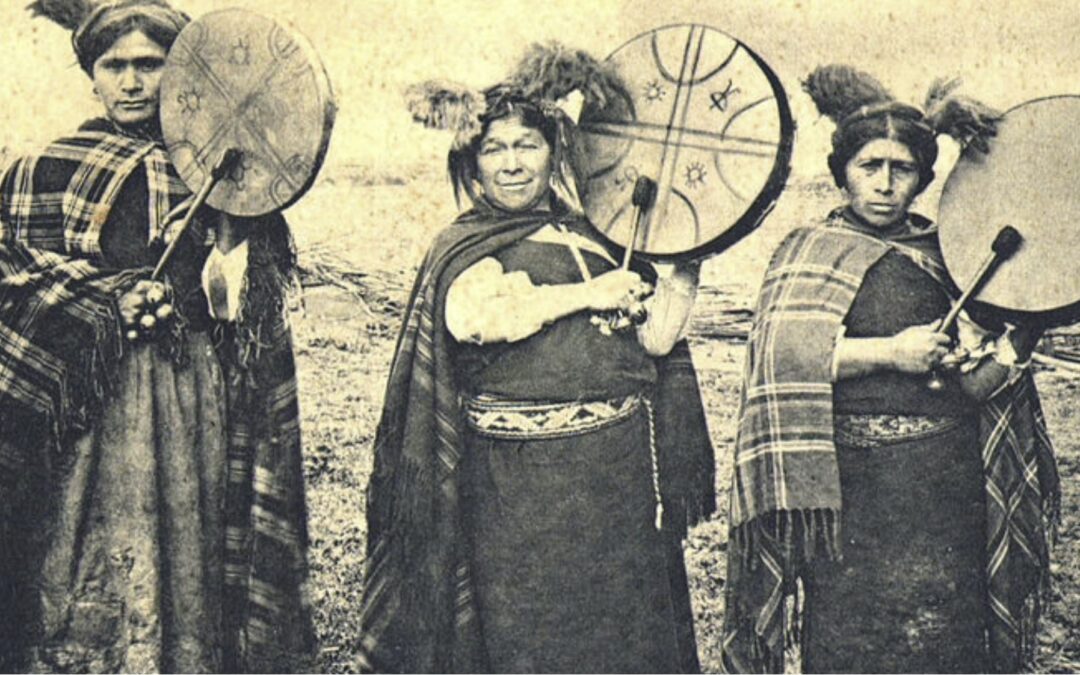

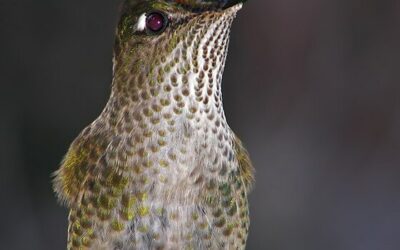
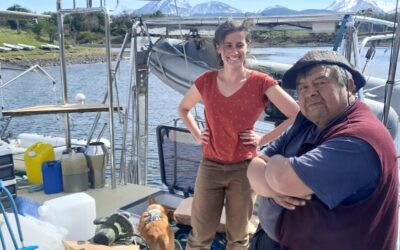
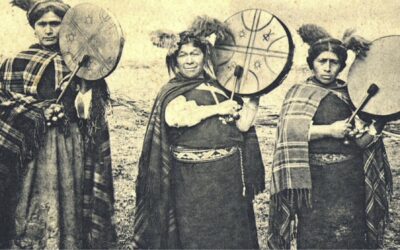
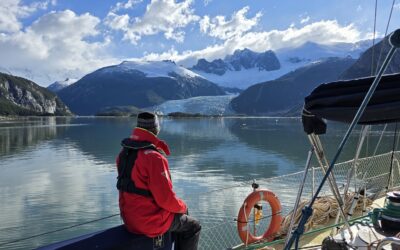
![[Sailing Patagonian channels] Sébastien’s Logbook part 1](https://karukinka.eu/wp-content/uploads/2025/08/Caleta-eva-luna_012025_Karukinka4-400x250.jpg)
